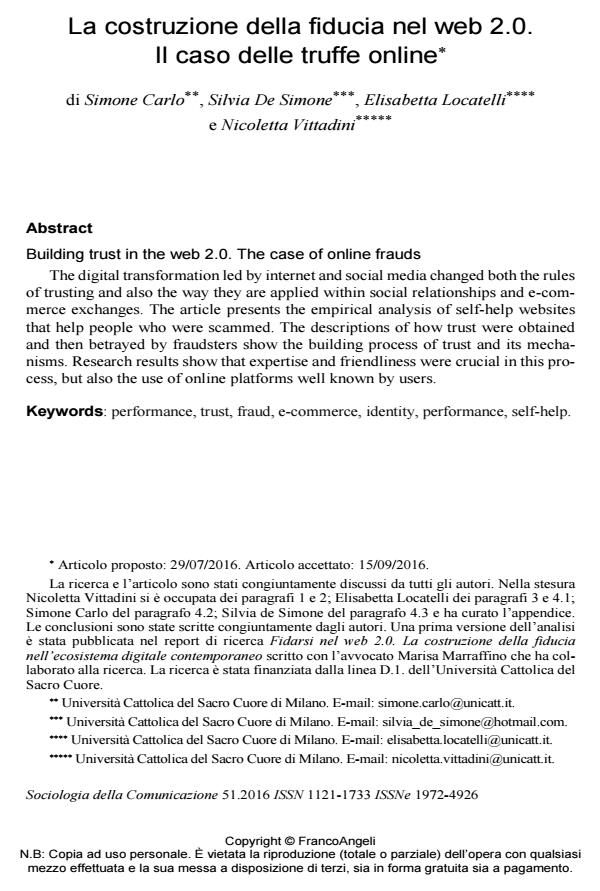La costruzione della fiducia nel web 2.0. Il caso delle truffe online
Titolo Rivista SOCIOLOGIA DELLA COMUNICAZIONE
Autori/Curatori Simone Carlo, Silvia De Simone, Elisabetta Locatelli, Nicoletta Vittadini
Anno di pubblicazione 2016 Fascicolo 2016/51
Lingua Italiano Numero pagine 19 P. 64-82 Dimensione file 224 KB
DOI 10.3280/SC2016-051005
Il DOI è il codice a barre della proprietà intellettuale: per saperne di più
clicca qui
Qui sotto puoi vedere in anteprima la prima pagina di questo articolo.
Se questo articolo ti interessa, lo puoi acquistare (e scaricare in formato pdf) seguendo le facili indicazioni per acquistare il download credit. Acquista Download Credits per scaricare questo Articolo in formato PDF

FrancoAngeli è membro della Publishers International Linking Association, Inc (PILA)associazione indipendente e non profit per facilitare (attraverso i servizi tecnologici implementati da CrossRef.org) l’accesso degli studiosi ai contenuti digitali nelle pubblicazioni professionali e scientifiche
La digitalizzazione delle relazioni sociali operata dai social media e dalla rete, ha parzialmente rinnovato le regole attraverso cui si attribuisce fiducia a un interlocutore e il modo in cui queste vengono applicate sia nelle relazioni sociali sia nello scambio di beni. Nell’articolo si presenta l’analisi empirica di un luogo privilegiato di osservazione: i gruppi di auto aiuto di soggetti che hanno subito truffe online. La descrizione del momento in cui la fiducia viene carpita o tradita, infatti, consente di mettere in luce meccanismi attraverso cui è stata costruita e accordata. I risultati mostrano come siano cruciali competenza e benevolenza, ma anche l’uso di specifiche piattaforme che avvicinano in modo familiare gli interlocutori.
Parole chiave:Ffiducia, truffe, performance, identità, auto-aiuto
Simone Carlo, Silvia De Simone, Elisabetta Locatelli, Nicoletta Vittadini, La costruzione della fiducia nel web 2.0. Il caso delle truffe online in "SOCIOLOGIA DELLA COMUNICAZIONE " 51/2016, pp 64-82, DOI: 10.3280/SC2016-051005